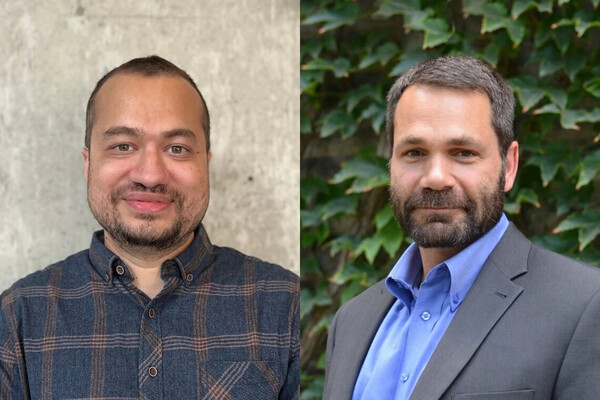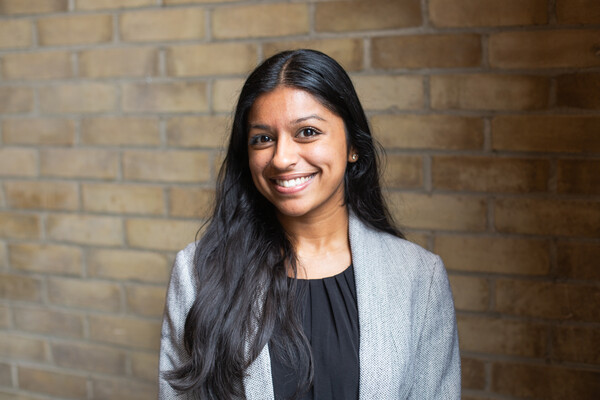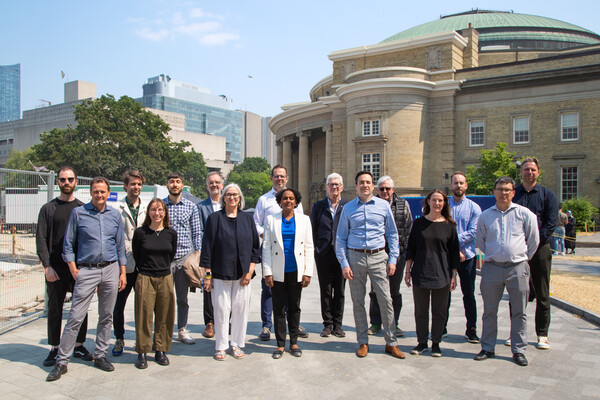Main Second Level Navigation
Breadcrumbs
- Home
- News & Events
- Recent News
- PhD Student Finds Global Network of Protein Chaperones in Yeast
PhD Student Finds Global Network of Protein Chaperones in Yeast
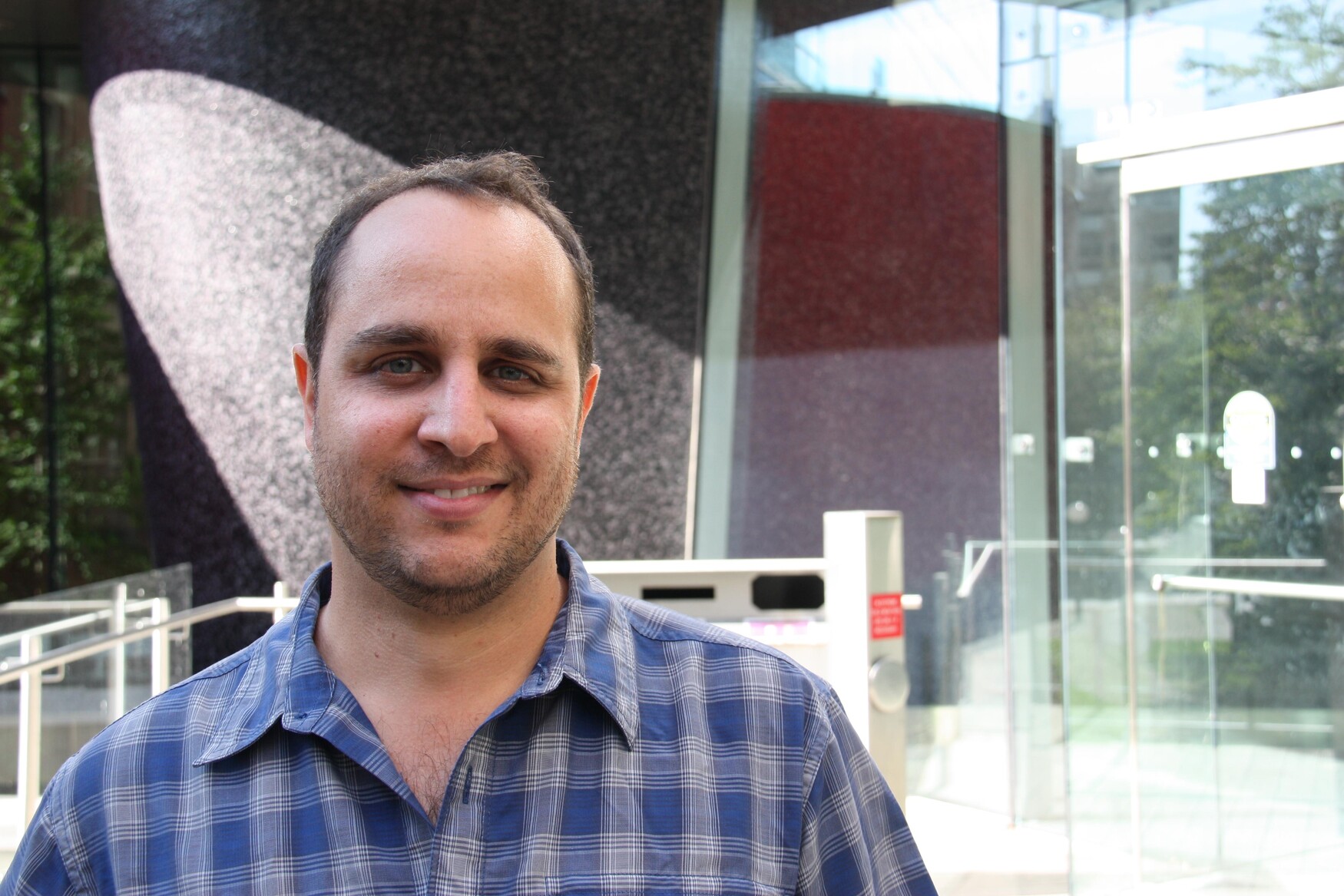
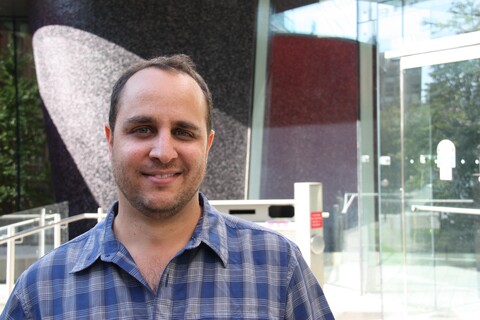
Kamran Rizzolo likes the big picture. Maybe it’s his global roots — he’s Venezuelan and Canadian from Italian and Iranian stock and is married to an American. Or it could be his time at the Broad Institute of MIT and Harvard, where he first saw the power of combined sequencing technology development while mapping the genome of the dengue virus. But Rizzolo is drawn to systems-level biology and bioinformatics — large-scale computing that synthesizes streams of diverse data for insights into health and disease.
Rizzolo and his colleagues in the lab of Professor Walid A. Houry in the Department of Biochemistry recently uncovered a large network of helper or ‘chaperone’ proteins, which play a role in protein stability and cell function in yeast (like in many other organisms). The journal Cell Reports published the findings this fall, and this week the academic series Methods in Molecular Biology included the work in a new book on chaperones. Rizzolo spoke with writer Jim Oldfield about the findings and what they mean for research on protein folding, how cells respond to stress, and illnesses including neurodegenerative disorders and cancer.
What did you set out to do in this paper?
Molecular chaperones are proteins that mainly help other proteins fold into three-dimensional shapes, which largely determine each protein’s functional role inside the cell. Chaperones are critical for protein assembly, and recent research suggests that misfolded proteins play a role in neurodegenerative diseases such as Alzheimer’s and Huntington’s, and some cancers. But chaperones typically interact with dozens of other proteins, so it’s very hard to pinpoint their role in the cell. We decided to take a systems-level view and ask, ‘What kind of data can we gather to understand the global chaperone network?’ We looked at the budding yeast, Saccharomyces cerevisiae, because it’s a simple model with many evolutionarily conserved biological pathways relevant to humans. We collected physical data from several studies of protein-protein interactions, including one from our lab, and data on gene interactions from high-throughput arrays working closely with Professor Charles Boone’s lab in the Donnelly Centre. Then we combined all this data to generate a comprehensive map of the chaperone network in yeast.
What did you find?
We uncovered over 1000 novel interactions involving chaperones in yeast, well beyond four-fold the number previously known. One very striking finding was that chaperones tend to work in groups, much more so than most researchers thought. There were many connections between them and transfers of client proteins — even in some families thought to be quite isolated. Together they form a very large complex in the cell, which we called the ‘NAJ’ or naturally joined chaperone complex. So, while before, researchers studying the cause of a disease may have looked for a single chaperone, now they can use our work to home in on several chaperones that function as a system. This should prove very useful for chaperone research and for finding new interactions in other organisms, in healthy and diseased cells.
Did you use this map for further research?
Yes, we looked at four chaperones connected to the canonical Hsp90, which is a central chaperone that stabilizes numerous proteins against cellular stress and is involved in the progression of some cancers. In particular, we wanted to know more about the curious tendency of those chaperones to clump up under stress conditions — it is unknown why and how they do that. Looking at our network, we got a sense of other players involved. Two of the four chaperones (Rvb1 and Rvb2) were able to form these clumps, but the other two (Tah1 and Pih1) did not. That told us that chaperone clumping is driven by Rvb1/2. A subgroup of yeast proteins have been shown to form aggregates, and Rvb1/2 have close interaction with those proteins. We found Rvb1/2 to form these aggregates or condensates during nutrient starvation, a type of stress that is reversible. We propose this could be a conserved mechanism that enables proteins to deal with stress such as a lack of glucose: proteins would form reservoir condensates and then return to their usual soluble state after the stress conditions disappear. In humans, this kind of mechanism may have implications for underlying disease states.
What triggered your interest in this area of research?
I lost both my parents to cancer. My father died from colon cancer when I was six and my mother died from breast cancer when I was 12. I always bring that up when I talk about why I do research. I’m the only one in my family doing this kind of work, so I’m trying to forge a new path. The passing of my parents gave me the motivation to ask questions about how disease happens and how it affects patients. I’ve wanted to learn more about how biological systems work ever since.
What’s next for you?
I will likely complete my PhD next year. I need to finish my other big project, which looks at how a folding chaperone that proteins encounter when they are first made in bacteria cells is actually associated with a protein degradation pathway. This has implications in bacterial pathogenesis. I should start the thesis writing in the summer. Beyond that, I’d like to work in an institution where I can use high-throughput research, generating lots of data that is then quickly translated into a direct clinical goal. I like thinking globally about how disease happens in the cell, and I enjoy working equally at the bench and on the computer, which I hope to continue doing.
Might you stay in Toronto?
Toronto is an up-and-coming hub for biomedical research, and it definitely exposed me to great collaborations, as you can see from this paper. I’m all about collaborating and meeting other scientists from many different backgrounds. Research has much more impact if you work with others who do things better than you, or do them differently. I saw that at the Broad, where they never stop reaching out around the world, and I see it here. Toronto has also been a great place to raise a child — our daughter just turned one and we’ve been able to take advantage of great programs for new parents that the city has to offer. I feel very grateful to be Canadian. But I kind of dragged my wife here from Boston, where she has family. It’s her turn to make a decision for our future.
News
